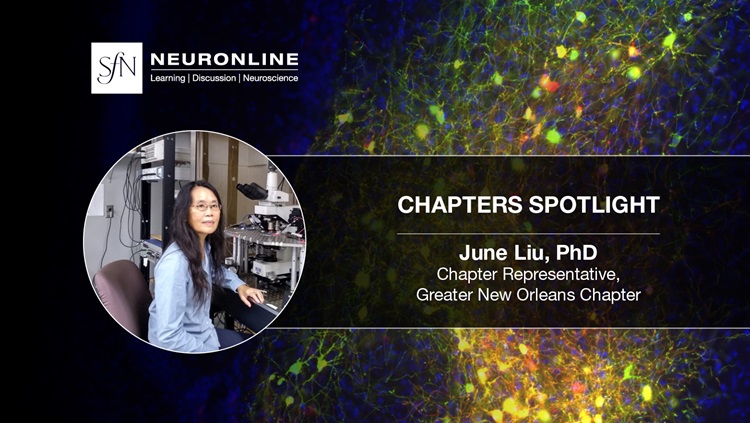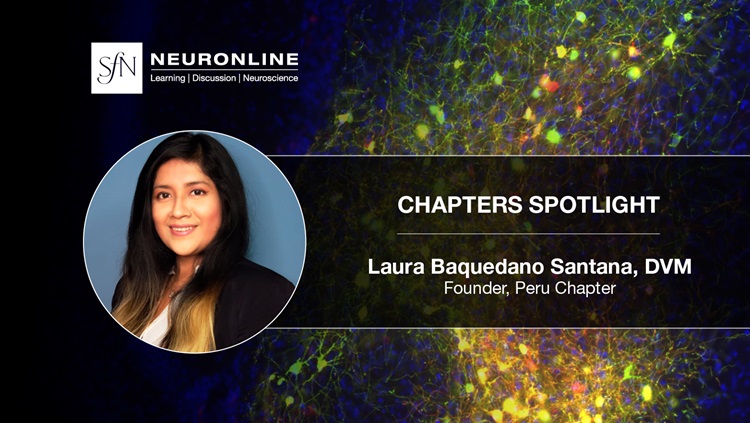
As scientists who are passionate about what we research, it is our natural drive to share our enthusiasm with the world. On the other hand, lay audiences today are accessing a surfeit of information – not always well sourced in rigor or facts – and are left with incorrect information and their questions unanswered. Finding effective ways to bridge this gap and inform the interested public about neuroscience in an engaging yet scientifically accurate manner is a unique problem for our generation of scientists to solve. On top of this, we should know better than anyone the importance of communicating in multimodal and accessible ways to a wide variety of neurotypical and neuro-atypical minds. An additional layer of nuance is to be considered when teaching neuroscience to children. From personal experience, children are easily inspired or discouraged from pursuing further learning in topics based on demographics and gender, as well as how scientific topics are taught.
The focus of neuroscience communication is often restricted to presenting scientific findings to a scientific or lay audience at scientific, outreach, and networking events. However, for effective science communication in neuroscience research, we need diversity of ideas and the scientific workforce. Personally, I have always been interested in ways we can inspire the public, especially children, to be interested in the natural world.
Science communication has therefore been a big part of my neuroscientific endeavors through graduate studies and beyond, through volunteering with various outreach organizations. In this journey, I’ve followed the following tenets of neuroscience communication for all ages:
- Reach the audience where they are at.
- Pique someone’s interest using common parlance without unnecessary jargon.
- Explain concepts accurately and logically.
- Relate scientific concepts back to the audience and everyday life.
- Scientific endeavor builds upon knowledge over time.
- Admit the limits of your knowledge and redirect as necessary.
- Provide accurate references for further information.
To reach my personal goal of contributing to early neuroscience education, I started at the beginning – research. While organizations like National Geographic Kids provide science books for children, I couldn’t find any books or resources that inspire children to be curious about the many wonders of the brain. The visuals used in these books were also often photographs and lacked the appeal of hand-drawn illustrations present in comparable picture books for children.
And there a germ of an idea was born – to illustrate and write a children’s neuroscience book with accurate visual representations of neurons, ganglia, and more. I wanted the accompanying text to highlight how these cells and tissues result in complex abilities. Lastly, and bucking conventional trends in children’s books, I wanted the book to be a stand-alone educational resource for classrooms and families laid out in a scientific format – including an introduction, glossary, and a detailed reference list for further study.
With these goals in mind, I began working on this project. Researching and painting various sensory systems ranging from the well characterized retina to the still mysterious ampullae of Lorenzini, was a source of inspiration. Learning that while the honeybee colony is a superorganism, bees sometimes rebel against the queen during regime changes blew my mind. These were the kinds of facts that I wanted to share with children, and adults, to inspire an interest in neuroscience and in conservation.
A year later, Baby Senses: A Sensory Neuroscience Primer for All Ages is published and now in print.
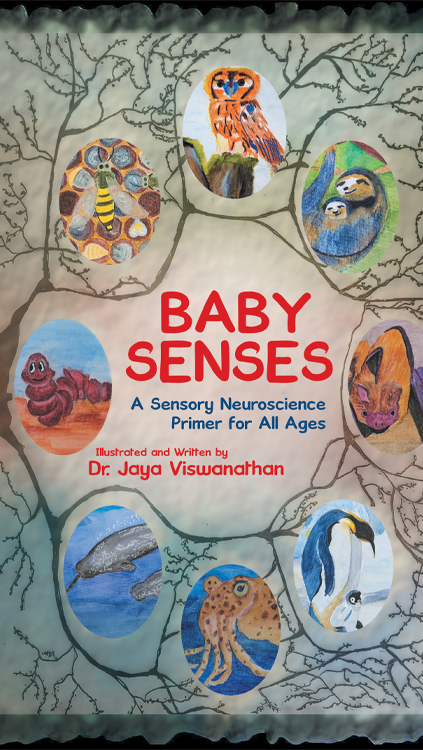
Some salient features of the book that made it universally relatable are:
- The parent-child bond represented between animals, which lets children instinctively identify with the book and our proximity to other amazing animals we share our planet with.
- Conversations between baby and adult animals that are easily recitable rhymes centered around their “superpowers.”
- The idea that what makes animals different makes them special, an essential sentiment to convey to young children of varying abilities.
- Hand-painted illustrations that are visually appealing, made using richly pigmented dry and soft pastels, color pencils, watercolors, and gouache.
- Instead of depicting one “animal hero,” usual and unusual animals are equally emphasized without resorting to anthropocentric narratives.
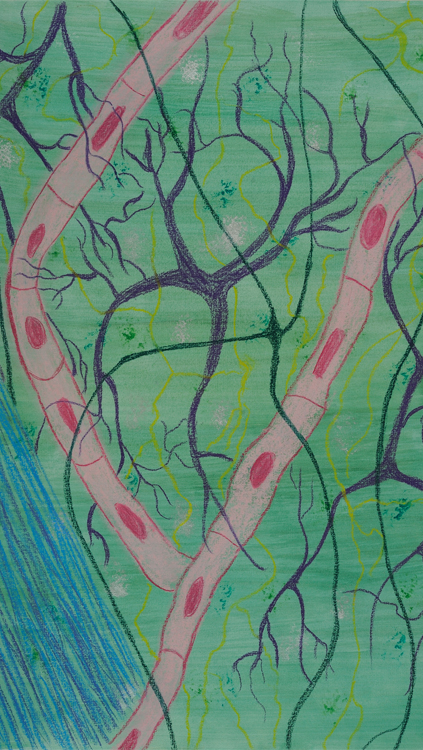
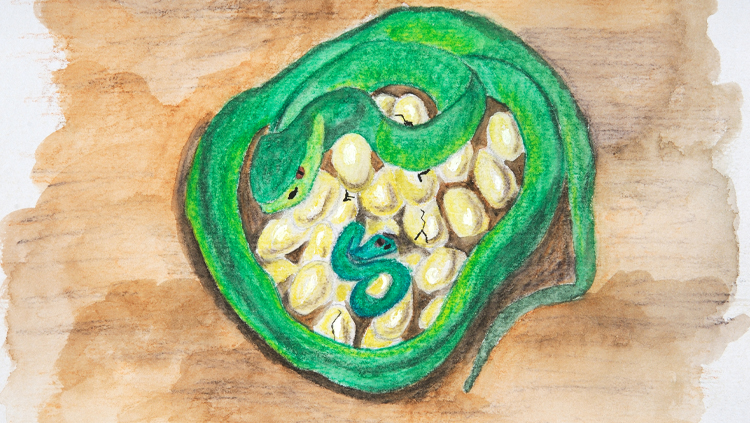
Beyond the book, I’ve also displayed these “neuroart” paintings in local galleries and disseminated neuroscience to lay audiences of all ages by appearing on a podcast.
The time and energy to effectively communicate neuroscience through this book has been worth every “extra” bit of effort outside my research work. For me, that entailed bridging together visual arts, science, and poetry in a tangible way that introduced children to the world of brains. In research, I find that I can sometimes get lost in my corner of academia and feel isolated. A reminder of the bigger picture, of whom we are trying to serve, and how we can pass on our accumulated knowledge to the generations to come has reinvigorated me.
Neuroscience education is a lifelong endeavor for me, and I plan on bringing other modalities into learning for all ages, through books, music, visual, and tactile arts. The next steps for me include designing various interactive activities for children and adults – such as “Paint-the-Brain” or “Rhyme-the-Brain” sessions, researching my next neuroscience-neuroart book for children, and infecting those around me with my love of neuroscience.
To learn more, feel free to visit the Baby Senses Art of Neuroscience Booth at Neuroscience 2023!


